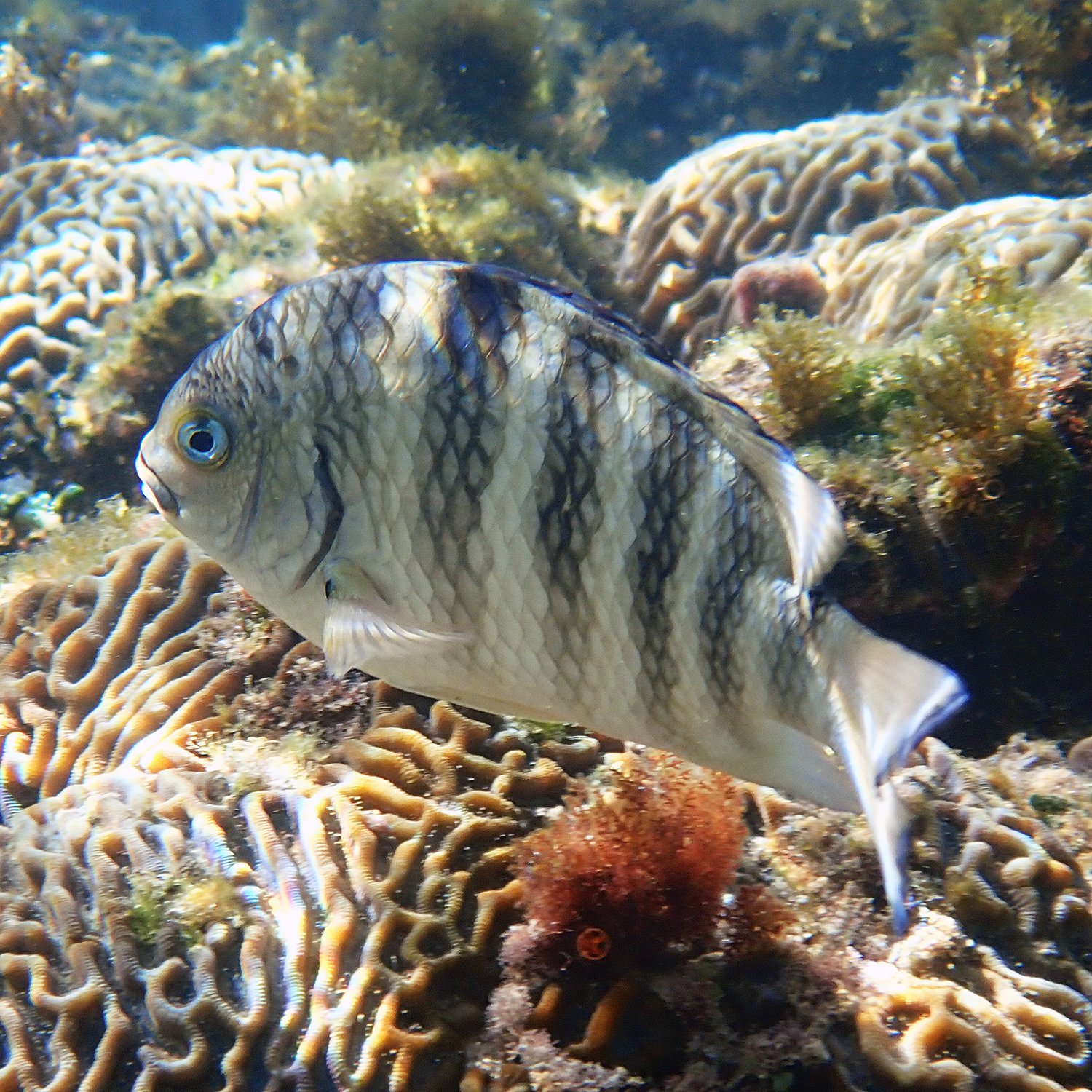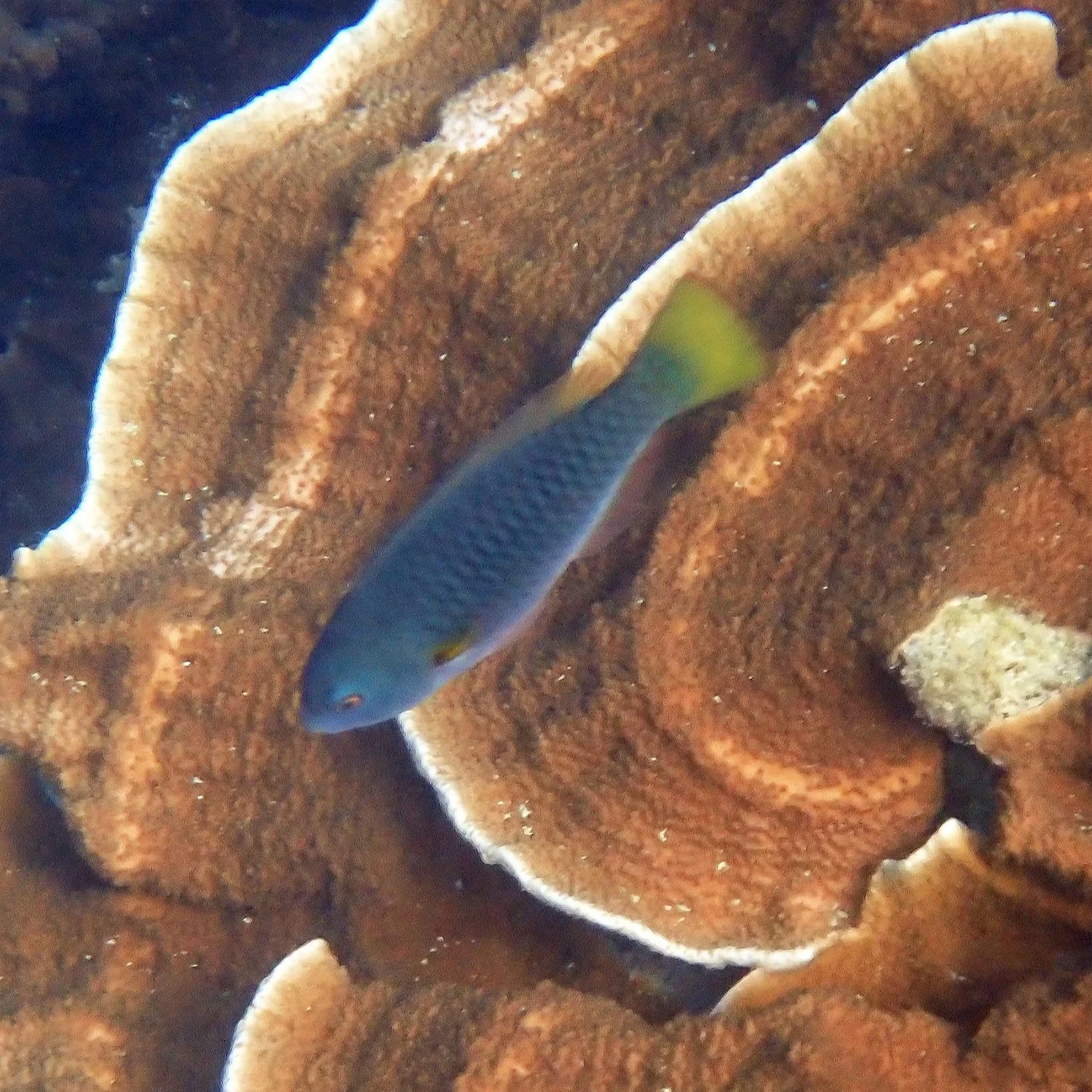It is five years since I began wielding a camera underwater in Norfolk Island’s lagoons and my third ‘year in review’ (links to 2023 and 2022 are at the end of this post). And what a journey it has been. At least this year I have some great news to report, but – a bit like a curate’s egg (partly bad and partly good) – there are also some downers.
It’s an ill wind – as the island goes into a deep drought
Norfolk Island is currently in a deep drought, with some people struggling to meet their basic household needs.
After the downpours of 2022 and early 2023 when we had twice the average rainfall (and the highest on record), by 2024 we were once again looking at low rainfall levels. So much so that at the time of writing this report, on 27 December 2024, we’d only had 652 mm in our rain gauges for the year – half our average and on track for the lowest since records began in 1891 by a whopping 126 mm. The next lowest annual rainfall was in 2017 with 778.6 mm.
What has this got to do with my annual report card for Norfolk Island’s reef? I suspect rather a lot. What is a difficult situation for humans has led to some positives in the lagoons.
With the low levels of underground water discharge from the aquifer, and negligible overground freshwater making its way into the contiguous Slaughter and Emily lagoons, there have been correspondingly less nutrients (namely, sewage) and sediment entering the reef ecosystem. This has had a noticeably positive effect on the condition of some of the corals, with less visible signs of white syndrome and other diseases, and the new growth looking a great deal healthier. This is my perception, so I will wait with interest to see what the coral health researchers will report as a result of their December 2024 trip.
I say this with a degree of caution because although the reef is looking much improved another heavy rainfall year like 2022 – while welcome for Norfolk Island’s residents, including me – could well take us back to square one, because we haven’t yet properly addressed what is finding its way into that wastewater. More on this below.
The welcome initiative by Australian Marine parks in February 2023 to establish complete no-take zones in Emily and Slaughter Bays, and a no-take zone for echinoderms (that is, sea urchins, known locally as wunna in the Norf’k language, and sea cucumbers) in Cemetery Bay has also had some positive knock-on effects. By 2024, we began to see juvenile urchins for the first time since I started monitoring the reef, and the ones that were already adults getting quite sizeable. Alongside this has been a gradual reduction in some of the algae as the wunna chow their way through the greenery. Sea cucumbers don’t appear to have bounced back as readily but there are definitely more of them about.
Juvenile doubleheader, Coris bulbifrons
Adult doubleheader, Coris bulbifrons
I talk about the benefits of sea urchins and cucumbers in these two articles:
These two factors combined have quite likely seen an increase in fish in the lagoons. Again, this is my perception. The carnivorous wrasse family, in particular, have benefitted from the no-take zones and the increased numbers of wunna, with plenty of juvenile fish in the lagoon – the magnificent doubleheaders being a standout (see photos, above). Again, the knock-on effects of the no-take initiative echo across the whole ecosystem.
In my 2023 report, I talk about the species of fish that had seemingly left the lagoons during the previous year. However, this year, I can report that many of them are back and in good numbers (bearing in mind we are such a small ecosystem, so for some species that may only be half-a-dozen or so).
In that post, I also mentioned that in the four years between January 2020 and December 2023 I had recorded eleven new species that had not been previously recorded on Norfolk Island’s reef. During 2024, I can add a further eight, taking this number to a total of nineteen. That doesn’t necessarily mean that some of these species haven’t always been here, just that they haven’t appeared in previous censuses. Either way, this really is a wonderful outcome!
Here’s the full list:
Spreading the word on Norfolk Island’s reef
In my 2023 review I talked about how my social media pages had reached 2.75 million eyeballs during 2023. On 17 January, just a couple of weeks after I published that information, along with a description of the uncomfortable truths facing our reef, my Facebook and Instagram pages were hacked, so my first blog post in 2024 was about how this had happened. Sadly, as many people will know, Meta (owner of Facebook and Instagram) was not helpful when trying to reclaim my pages. I don’t have time for indulging in exercises in futility, so I abandoned those pages to their fate and started again. From scratch.
Anyway, this year has obviously been a lot quieter on social media, but I am steadily growing my Facebook and Instagram pages once again, and I have also begun posting some (but certainly not all) of my posts on LinkedIn. This audience is entirely different and includes many marine and environmental researchers and professional advocates.
Meanwhile, I’m delighted to say that this website and blog remain in the top 20 coral reef blogs in the world according to Feedspot (No 4 when I last checked, but it does go up and down a bit).
The Watermill Dam incident
While the year has seen steady improvements across the reef, it nearly all turned to nought on the back of a ‘malfunction’ of an outlet valve at Watermill Dam, upstream from the bays, which sent polluted water cascading dow the channel and into Emily Bay.
A few weeks later we had was stretches of dying Acropora coral on the outer reef, and today these are now taken over by algae, as you can see in the images below. I won’t detail this incident here, because it is already recorded on these pages in an article titled ‘Groundhog Day in Emily Bay’. It was a blow for a reef that is already under stress, and something that could/should have been avoided.
It also had impacts for human-health, with soaring levels of Enterococci on the weekend it happened (400,000 CFU/100mL, when the ‘safe’ level for swimming is 500 CFU/mL). Not a good look for arguably one of Australia’s top beaches (we’ve been given a tip off that we will make the list in 2025).
Island ecosystems matter
In October 2024, CSIRO delivered their much-anticipated report on the water quality in Norfolk Island’s catchments. The results were exactly as expected. No surprises at all. Cattle and humans are the chief culprits, followed by fertiliser use. As I have said repeatedly, we have been getting reports (although perhaps not as definitive as this one) saying much the same thing for decades and concerns being aired from at least the 1960s.
Now we have this report, there is no side-stepping the issue. It is unequivocal in its damming findings, but will anything happen to sort out the mess? These are not issues a small island population can fix alone, while each year more corals get sick and die.
There appears to be a pattern repeated down the decades. Governments and administrations come and go, and the wastewater ‘can’ gets kicked down the proverbial road each time a report comes out. Our Council (soon to be Assembly) and the Department of Infrastructure both need the appropriate governance instruments (legislation) at their disposal and be adequately resourced to tackle the problems. While the first issue of governance is something only the government can address, perhaps there are ways to imaginatively raise the funds we need to safeguard to fix the problem and to showcase Norfolk Island as an’ark’ – an exemplar of what can be achieved for small islands in the Pacific, not just for residents but for the broader worldwide community. Places like these are increasingly rare and precious, and are not to be squandered through apathy, political expediency and ignorance.
The CSIRO report can be found here: Norfolk Island Water Quality Assessment. This report should be read together with the report on acid sulphatre soils, here: Acid Sulfate Soil Management in the Kingston and Arthur’s Vale Historic Area (KAVHA) on Norfolk Island.
Read more about the CSIRO report, here: Taking stock. Which way from here?
Other reports into the health of the lagoon that have been delivered this year include:
Norfolk Island Lagoonal Reef Ecosystem Health Assessment 2023–2024
Colonial Ascidian Populations at Inshore Coral Reefs of Norfolk Island, South Pacific
Committed to Norfolk Island’s reef?
Very!
In June this year, I took my five-year journey of advocating for Norfolk Island’s reef to a whole new personal level. I commenced a PhD in Marine Science at the University of Newcastle. If I can give a little back to the place that has nurtured and cared for me on so many levels and given me so much pleasure and enjoyment, that will be a retirement worth having. Hopefully some of my research will go some way to help inform the management of Norfolk Island’s special coral reef so that it is here for my grandchildren and their children to enjoy in the years to come.
Infographic produced by Dr Tom Rayner for a joint presentation given at the ANZSEE Conference by myself and Dr Boyd Blackwell, Stradbroke Island, October 2024























